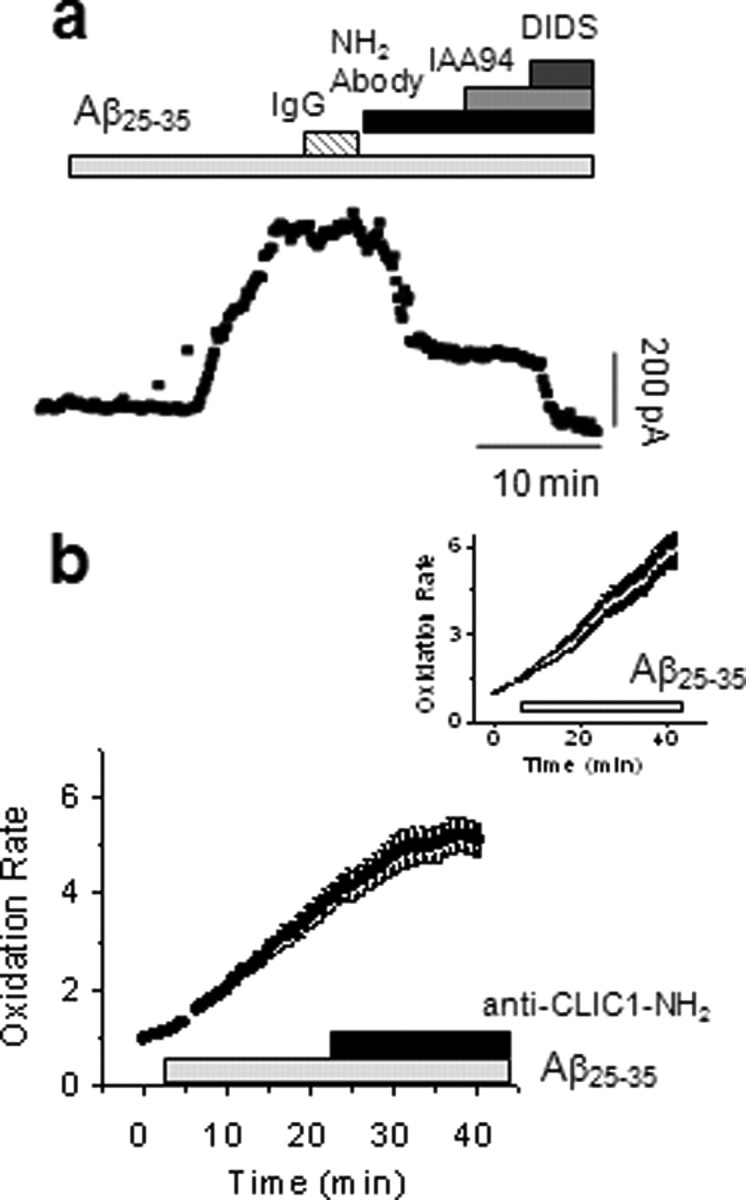Figure 6.

Anti-CLIC1 antibodies inhibit both the anion current and ROS production by Aβ-stimulated microglia. a, The Aβ-induced increase in membrane current was insensitive to purified sheep IgG (n = 6), but was reduced by application of the CLIC1-NH2 specific antibody, after which IAA94 did not reduce the current further. The residual current was blocked by DIDS. The amplitude of the average current after Aβ was 365.3 ± 18.8 pA and was reduced significantly by the anti-CLIC1 antibody to 153.8 ± 11.8 pA (n = 8; p < 0.001, independent samples t test). b, Addition of the antibody 20 min after Aβ-induced activation inhibited established ROS production. Control cells (inset) showed a 67.4 ± 22% increase in the rate of HEt oxidation between 10–20 and 20–30 min periods (n = 134 cells). Addition of the anti-CLIC1 antibody at 20 min significantly reduced the rate, which instead of increasing, now decreases by 16.2 ± 8% (mean ± SEM; n = 38 cells; p < 0.001, Mann–Whitney).
